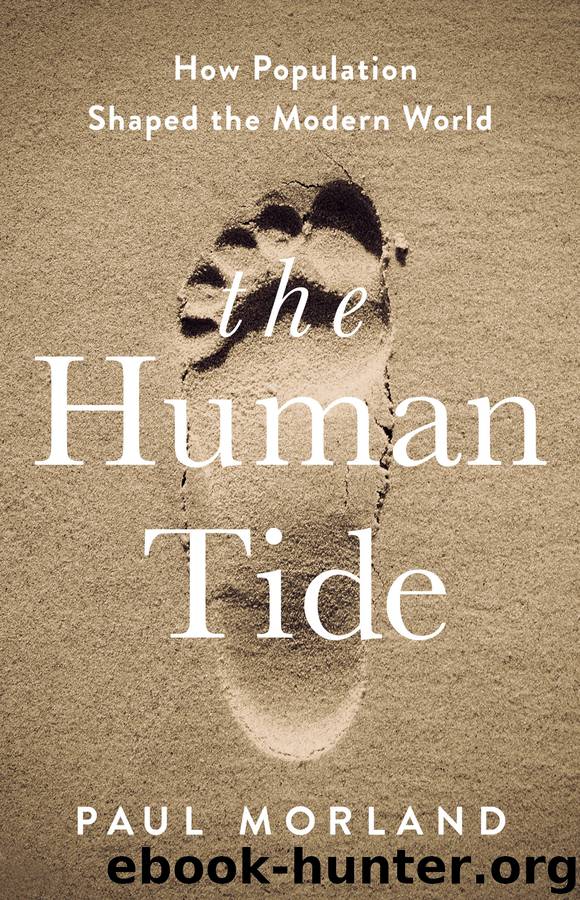The Human Tide: How Population Shaped the Modern World by Paul Morland

Author:Paul Morland
Language: eng
Format: epub
Publisher: Hachette UK
Published: 2019-01-10T00:00:00+00:00
Political Responses
The Soviet Union was not a land in which matters were supposed to take their own course–it was a planned society. For Soviet ideologues, society and the economy were to be run to meet specific goals. With effectively no free market or private property, the state was supposed to provide everything for its citizens from education and a home to a job and a holiday–not to mention a maternity ward and a funeral, the archetypal ‘cradle to grave’. It should come as no surprise, therefore, that demography was not going to be left to chance. But while it turned out that the state could not arbitrarily determine how many children would be born or how many people in any year would die, and therefore it could not entirely control the population’s size and make-up, it could and did react to population trends in the country.
The pressures on Soviet policy makers were numerous and conflicting, and this perhaps explains the slow and relatively ineffective nature of policy making. First, party doctrine was always pro-natalist. Marx had been explicitly anti-Malthusian, arguing that constraints on population were not ‘natural’ but rather the product of oppressive, exploitative and extractive political and economic systems. Malthus, as far as Marx was concerned, was an apologist of the bourgeoisie for the impoverishment of the peasants and workers, dressing up their poverty as an inevitable consequence of biology and ecology rather than the outcome of an outdated political economy no longer in line with the requirements of the age. For Marx, then, population control was unnecessary; under socialism, there would be plenty for all. From the perspective of doctrine, therefore, the Soviets favoured a large population. Moreover, a large, young, growing population proved the virility of the Soviet model and the life-affirming nature of socialism. Waves of young men–and indeed women–had staved off the invading Fascist hordes in 1941. A large and growing population was also required to ensure the workforce continued to expand and make its economic contribution in fulfilment of the plan.
There were, however, countervailing pressures at work which tended to make Party bosses less keen on large families. These included the need to keep Soviet women in the workforce: while encouraging their childbearing would help meet future requirements for the workplace, it detracted from the more immediate requirements of the day. Childcare facilities could be put in place to encourage childbearing and prolong workforce participation, but there were other demands on resources. Particularly in the early days, the Soviets tended to associate large families with backwardness and the habits of peasants. Educating women, urbanising them and giving them a place in a modern industrial economy was not compatible with their having six or seven children.
Although the fertility of central Asians and people of the Caucasus contributed to the overall fertility of the country, the reduction in the predominance of Russians in particular and Slavs in general gave rise to concerns which again ran counter to nominally internationalist Marxian orthodoxy. First, there was no doubt
Download
This site does not store any files on its server. We only index and link to content provided by other sites. Please contact the content providers to delete copyright contents if any and email us, we'll remove relevant links or contents immediately.
Cecilia; Or, Memoirs of an Heiress — Volume 1 by Fanny Burney(32022)
Cecilia; Or, Memoirs of an Heiress — Volume 3 by Fanny Burney(31436)
Cecilia; Or, Memoirs of an Heiress — Volume 2 by Fanny Burney(31380)
The Great Music City by Andrea Baker(30641)
We're Going to Need More Wine by Gabrielle Union(18605)
All the Missing Girls by Megan Miranda(14591)
Pimp by Iceberg Slim(13717)
Bombshells: Glamour Girls of a Lifetime by Sullivan Steve(13665)
Fifty Shades Freed by E L James(12886)
Talking to Strangers by Malcolm Gladwell(12813)
Norse Mythology by Gaiman Neil(12785)
For the Love of Europe by Rick Steves(11331)
Crazy Rich Asians by Kevin Kwan(8860)
Mindhunter: Inside the FBI's Elite Serial Crime Unit by John E. Douglas & Mark Olshaker(8663)
The Lost Art of Listening by Michael P. Nichols(7125)
Enlightenment Now: The Case for Reason, Science, Humanism, and Progress by Steven Pinker(6852)
The Four Agreements by Don Miguel Ruiz(6284)
Bad Blood by John Carreyrou(6252)
Weapons of Math Destruction by Cathy O'Neil(5800)
